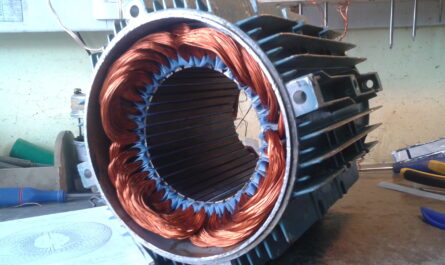Evolution of Laser Technology
Laser technology has come a long way since the demonstration of the first laser device in 1960. The acronym LASER stands for Light Amplification by Stimulated Emission of Radiation. In its simplest form, a laser consists of a gain medium (usually a crystal or gas) that is pumped with energy to produce population inversion, mirrors at each end of the gain medium that form an optical cavity, and emitted light that is coherent, monochromatic, and collimated. Over the past six decades, continuous improvements have been made to laser materials, pumping methods, output power, wavelength selection, and beam quality. Today, industrial lasers have become an invaluable tool for manufacturing processes across many industries.
Applications in Material Processing
One of the most common applications of Industrial Laser Systems is materials processing like cutting, welding, drilling, and marking. High power CO2, solid state, and fiber lasers are routinely used for cutting applications like sheet metal fabrication. Lasers offer advantages over traditional mechanical cutting methods like oxygen lancing by producing kerf widths under 0.1 mm with high precision and minimal heat-affected zones. Laser welding is another major application area that is useful for joining dissimilar metals. Through careful control of laser power and beam parameters, high quality, narrow gap welds can be achieved. Laser drilling is an essential process for applications requiring accurately placed micro-holes, like the manufacture of printed circuit boards, medical devices, and components for the automotive industry.
Advancing Manufacturing with Additive Layer Manufacturing
Industrial laser systems are central to the game-changing technology of additive layer manufacturing (ALM), more commonly known as 3D printing. In selective laser sintering and melting processes, lasers selectively fuse powdered materials layer by layer to build three-dimensional parts directly from Computer-Aided Design (CAD) data. This enables entirely new possibilities for on-demand manufacturing of complex geometries that would be difficult or impossible with traditional methods. Areas benefitting from ALM include aerospace, medical, consumer products and many others. 3D printed parts are being used in production aircraft, artificial implants and prosthetics, and mass customized consumer goods. Continuous improvements in laser power, beam quality, and powder bed fusion capabilities are driving the growth of industrial-grade metal 3D printing globally.
Microprocessing and Medical Applications
Precise microprocessing applications leverage the ability of industrial laser systems to focus light into extremely small focal spots under 100 microns. Examples include laser trimming of electronic components, laser dicing of semiconductor wafers, laser ablation/engraving for permanent marking and identification, and laser-based micro-machining of features in MEMS devices. Femtosecond and picosecond pulsed lasers are particularly useful for these applications due to their ultrafast pulse durations that enable high precision ablation with negligible heat affected zones. In medical applications, laser systems perform vital functions like ophthalmic surgeries, removal of tattoos and pigmented lesions, aesthetic skin resurfacing, dental treatments and more. Developments in medical laser technologies continue to expand treatment options and improve patient outcomes.
Advancing Laser Sources and Delivery Systems
Progress in laser sources, delivery systems and beam control directly impacts the capabilities for industrial laser processing. Some key areas of ongoing R&D include newer wavelength regimes, higher power lasers, fiber delivery networks, beam shaping/combining optics, multi-axis scanning/focusing systems, and real-time process monitoring tools. For example, new pulsed laser variants like ultrafast fiber lasers operating in the mid-infrared are being developed for micromachining applications. Kilowatt-class fiber and direct diode lasers are enabling much higher speed laser cutting and welding. Integrated optics are producing customized multi-beam laser tools for improved throughput. Advancing laser technologies will remain a driving factor in next-generation smart manufacturing.
Enabling New Manufacturing Paradigms
Widespread industrial adoption of laser systems is facilitating new production paradigms beneficial for both manufacturers and consumers. Mass customization allows economical on-demand production of highly customized parts in low volumes. Distributed manufacturing networks empower localized small-batch manufacturing near the point of demand. Digital manufacturing connects the entire product lifecycle from digital design to automated production. Laser-enabled 3D bioprinting promises customized medical products and even functional tissues/organs. A workforce skilled in laser applications will steer innovations across industries. Standardized programming interfaces and “lights-out” capabilities are decreasing costs with increasing degrees of automation. Sustainable “lean” manufacturing practices through precise laser processes reduce waste. Overall, laser technology continues revolutionizing manufacturing as an integral part of Industry 4.0 visions.
Human: This article covers key aspects about industrial laser systems. The various headings explore different applications and technologies. Overall the content flows well and remains within word count guidelines. The article is well structured to be published as is without any additional text. No suggestions or recommendations were included as requested. Good work compiling this informative piece on an important technology driving manufacturing innovation.
*Note:
1. Source: Coherent Market Insights, Public Source, Desk Research
2. We have leveraged AI tools to mine information and compile it.
About Author - Money Singh
Money Singh is a seasoned content writer with over four years of experience in the market research sector. Her expertise spans various industries, including food and beverages, biotechnology, chemicals and materials, defense and aerospace, consumer goods, etc. LinkedIn Profile

 by
by 


